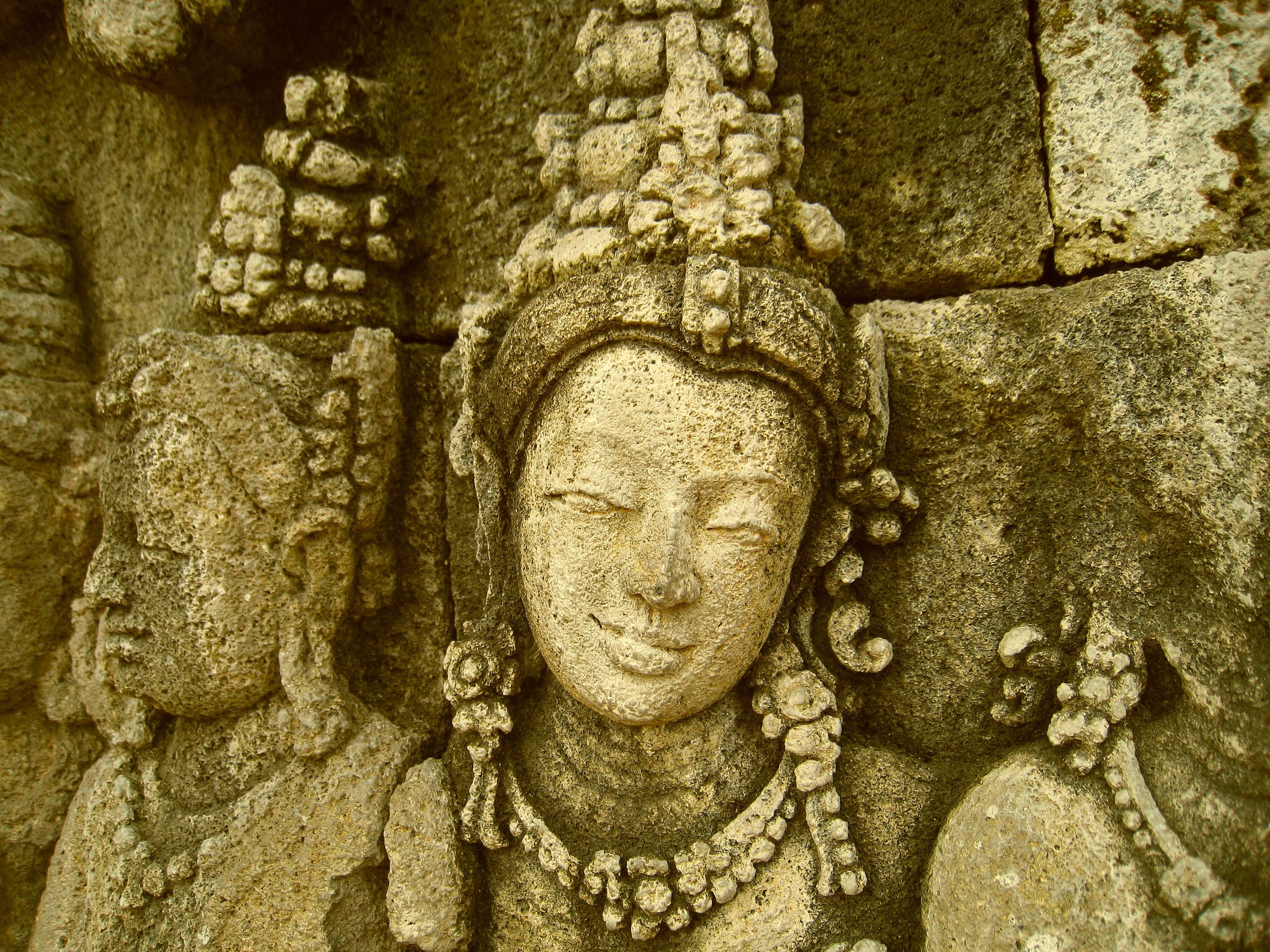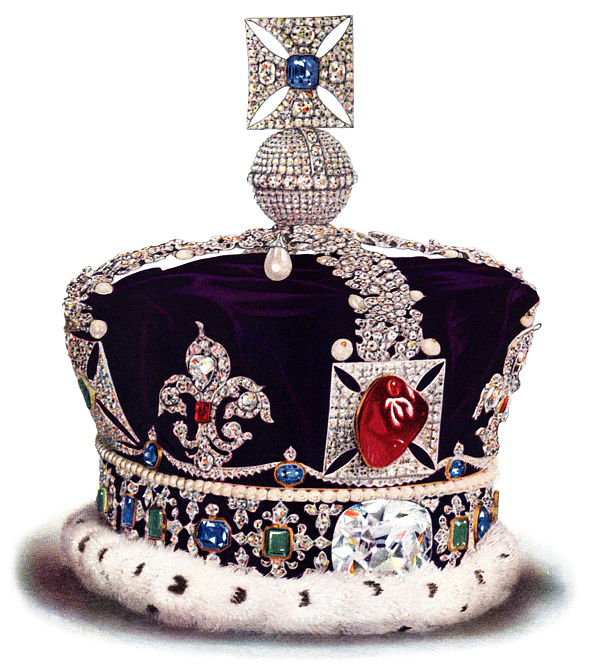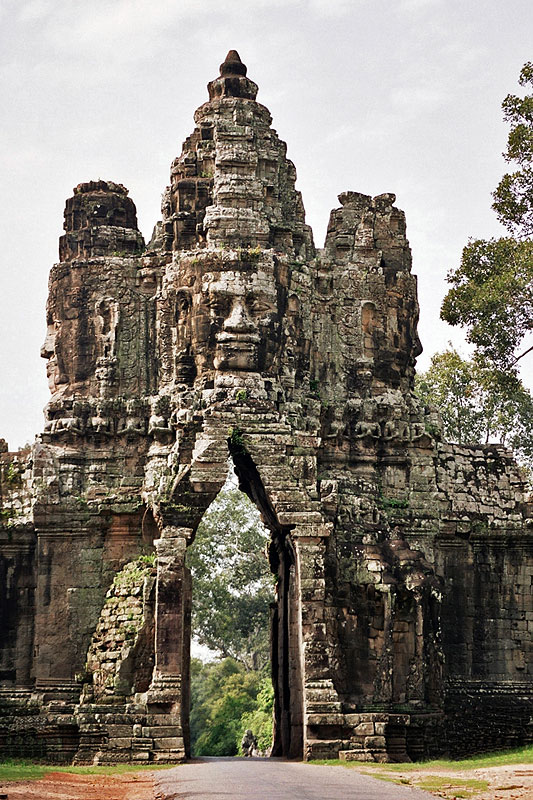|
Makuṭa
The (), variously known in several languages as ''makuta'', ''mahkota'', ''magaik'', ''mokot'', ''mongkut'' or ''chada'' (see below), is a type of headdress used as crown (headgear), crowns in the Southeast Asian monarchies of today's Cambodia and Thailand, and historically in Indonesia (Java, Sumatra, and Bali), Malaysia, Sri Lanka, Laos and Myanmar. They are also used in classical court dances in Cambodia, Indonesia, Malaysia, Sri Lanka and Thailand; such as ''Lakhon Khol, khol'', ''khon'', the various forms of ''Lakhon (other), lakhon'', as well as ''wayang wong'' dance drama. They feature a tall pointed shape, are made of gold or a substitute, and are usually decorated with gemstones. As a symbol of kingship, they are featured in the royal regalia of both Cambodia and Thailand. Etymology and origins The crown, in its various forms, originated as headdresses symbolizing the , the matted hair of an ascetic formed into the shape of a crown, often found in the iconog ... [...More Info...] [...Related Items...] OR: [Wikipedia] [Google] [Baidu] |
Crown (headgear)
A crown is a traditional form of head adornment, or hat, worn by monarchs as a symbol of their power and dignity. A crown is often, by extension, a symbol of the monarch's government or items endorsed by it. The word itself is used, particularly in Commonwealth countries, as an abstract name for the monarchy itself (and, by extension, the state of which said monarch is head) as distinct from the individual who inhabits it (that is, ''The Crown''). A specific type of crown (or coronet for lower ranks of peerage) is employed in heraldry under strict rules. Indeed, some monarchies never had a physical crown, just a heraldic representation, as in the constitutional kingdom of Belgium. Variations * Costume headgear imitating a monarch's crown is also called a crown hat. Such costume crowns may be worn by actors portraying a monarch, people at costume parties, or ritual "monarchs" such as the king of a Carnival krewe, or the person who found the trinket in a king cake. * The ... [...More Info...] [...Related Items...] OR: [Wikipedia] [Google] [Baidu] |
Royal Ballet Of Cambodia
The Royal Ballet of Cambodia (, ''Robam Preah Reach Troap'', ) is a classical Khmer dance known for its intricate hand movements and elaborate costumes. Historically linked to the Khmer court, it has been performed at various royal ceremonies such as coronations, weddings, funerals, and Khmer holidays. The repertoire includes various ancient Khmer legends. The ballet faced near extinction during the Khmer Rouge regime in the 1970s but continues to be a significant cultural heritage of Cambodia, reflecting traditional values of refinement, respect, and spirituality of the Khmer people. It has been inscribed on the UNESCO Intangible Cultural Heritage Lists since 2003. Etymology Western names for this dance tradition, such as Cambodian court dance, often make reference to the royal court, as the tradition was performed and maintained by attendants of the royal palaces. As a performing art, it is formally referred to as the Royal Ballet of Cambodia (''le Ballet royal du Cambo ... [...More Info...] [...Related Items...] OR: [Wikipedia] [Google] [Baidu] |
Wayang Wong
( ), also known as (), is a type of classical Javanese and Balinese dance theatrical performance with themes taken from episodes of the '' Ramayāna'' or '' Mahabharāta''. Performances are stylised, reflecting Javanese court culture: Despite being closely associated with Javanese and Balinese tradition, variants of dance drama can also be found in neighboring Javanese ethnic traditions, including Sundanese tradition. History The bas relief panels on the ninth-century Prambanan temple show episodes of the ''Ramayana'' epic. The adaptation of ''Mahabharata'' episodes has been integrated in the Javanese literature tradition since the Kahuripan and Kediri era, with notable examples such as Arjunawiwaha, composed by Mpu Kanwa in the 11th century. The Penataran temple in East Java depicts themes from the ''Ramayana'' and ''Mahabharata'' in its bas reliefs. The Javanese dance drama associated with ''wayang''s epic themes from the ''Ramayana'' and ''Mahabharata'' would ... [...More Info...] [...Related Items...] OR: [Wikipedia] [Google] [Baidu] |
Angkor Wat-Sued-Galerie-Huldigungszug-02-2007-gje (cropped)
Angkor ( , 'capital city'), also known as Yasodharapura (; ),Headly, Robert K.; Chhor, Kylin; Lim, Lam Kheng; Kheang, Lim Hak; Chun, Chen. 1977. ''Cambodian-English Dictionary''. Bureau of Special Research in Modern Languages. The Catholic University of America Press. Washington, D.C. Chuon Nath Khmer Dictionary (1966, Buddhist Institute, Phnom Penh). was the capital city of the Khmer Empire, located in present-day Cambodia. The city and empire flourished from approximately the 9th to the 15th centuries. The city houses the Angkor Wat, one of Cambodia's most popular tourist attractions. The name ''Angkor'' is derived from ''nokor'' (), a Khmer word meaning "kingdom" which in turn derived from Sanskrit ''nagara'' (), meaning "city". The Angkorian period began in AD 802, when the Khmer Hindu monarch Jayavarman II declared himself a "universal monarch" and " god-king", and lasted until the late 14th century, first falling under Ayutthayan suzerainty in 1351. A Khmer rebellion ... [...More Info...] [...Related Items...] OR: [Wikipedia] [Google] [Baidu] |
Indonesian Language
Indonesian (; ) is the official language, official and national language of Indonesia. It is a standard language, standardized variety (linguistics), variety of Malay language, Malay, an Austronesian languages, Austronesian language that has been used as a lingua franca in the multilingual Indonesian archipelago for centuries. With over 280 million inhabitants, Indonesia ranks as the list of countries by population, fourth-most populous nation globally. According to the 2020 census, over 97% of Indonesians are fluent in Indonesian, making it the largest language by number of speakers in Southeast Asia and one of the List of languages by total number of speakers, most widely spoken languages in the world.James Neil Sneddon. ''The Indonesian Language: Its History and Role in Modern Society''. UNSW Press, 2004. Indonesian vocabulary has been influenced by various native regional languages such as Javanese language, Javanese, Sundanese language, Sundanese, Minangkabau language, Min ... [...More Info...] [...Related Items...] OR: [Wikipedia] [Google] [Baidu] |
Malay Language
Malay ( , ; , Jawi alphabet, Jawi: ) is an Austronesian languages, Austronesian language spoken primarily by Malays (ethnic group), Malays in several islands of Maritime Southeast Asia and the Malay Peninsula on the mainland Asia. The language is an official language of Brunei, Malaysia, and Singapore. Indonesian language, Indonesian, a standardized variety of Malay, is the official language of Indonesia and one of the working languages of East Timor. Malay is also spoken as a regional language of Malays (ethnic group), ethnic Malays in Indonesia and the Thai Malays, southern part of Thailand. Altogether, it is spoken by 60 million people across Maritime Southeast Asia. The language is pluricentric and a ISO 639 macrolanguage, macrolanguage, i.e., a group of Mutual intelligibility, mutually intelligible speech varieties, or dialect continuum, that have no traditional name in common, and which may be considered distinct languages by their speakers. Several varieties of it ar ... [...More Info...] [...Related Items...] OR: [Wikipedia] [Google] [Baidu] |
Jawi Alphabet
Jawi (; ; ; ) is a writing system used for writing several languages of Southeast Asia, such as Acehnese language, Acehnese, Banjarese language, Banjarese, Betawi language, Betawi, Maguindanao language, Magindanao, Malay language, Malay, Maranao language, Mëranaw, Minangkabau language, Minangkabau, Tausug language, Tausūg, Ternate language, Ternate and many other languages in Southeast Asia. Jawi is based on the Arabic script, consisting of all 31 original Arabic letters, six letters constructed to fit phonemes native to Malay, and one additional phoneme used in foreign loanwords, but not found in Classical Arabic, which are ''ca'' ( ), ''nga'' ( ), ''pa'' ( ), ''ga'' ( ), ''va'' ( ), and ''nya'' ( ). Jawi was developed during the Spread of Islam in Southeast Asia, advent of Islam in Maritime Southeast Asia, supplanting the earlier Brahmic scripts used during Hindu-Buddhist era. The oldest evidence of Jawi writing can be found on the 14th century Terengganu Inscription Ston ... [...More Info...] [...Related Items...] OR: [Wikipedia] [Google] [Baidu] |
Balinese Language
Balinese is an Austronesian language spoken on the Indonesian island of Bali, as well as Northern Nusa Penida, Western Lombok, Southern Sumatra, and Sulawesi. Most Balinese speakers also use Indonesian. The 2000 national census recorded 3.3 million people speakers of Balinese, however the Bali Cultural Agency estimated in 2011 that the number of people still using the Balinese language in their daily lives is under 1 million. The language has been classified as "not endangered" by ''Glottolog''. The higher registers of the language borrow extensively from Javanese: an old form of classical Javanese, Kawi, is used in Bali as a religious and ceremonial language. Classification Balinese is an Austronesian language belonging to the Malayo-Polynesian branch of the family. Within Malayo-Polynesian, it is part of the Bali–Sasak–Sumbawa subgroup. Internally, Balinese has three distinct varieties; Highland Bali, Lowland Bali, and Nusa Penida Balinese. Demogra ... [...More Info...] [...Related Items...] OR: [Wikipedia] [Google] [Baidu] |
Javanese Language
Javanese ( , , ; , Aksara Jawa, Javanese script: , Pegon script, Pegon: , IPA: ) is an Austronesian languages, Austronesian language spoken primarily by the Javanese people from the central and eastern parts of the island of Java, Indonesia. There are also pockets of Javanese speakers on the northern coast of western Java. It is the native language of more than 68 million people. Javanese is the largest of the Austronesian languages in List of languages by number of native speakers, number of native speakers. It has several regional dialects and a number of clearly distinct status styles. Its closest relatives are the neighboring languages such as Sundanese language, Sundanese, Madurese language, Madurese, and Balinese language, Balinese. Most speakers of Javanese also speak Indonesian language, Indonesian for official and commercial purposes as well as a means to communicate with non-Javanese-speaking Indonesians. There are speakers of Javanese in Malaysia (concentrated ... [...More Info...] [...Related Items...] OR: [Wikipedia] [Google] [Baidu] |
Sanskrit
Sanskrit (; stem form ; nominal singular , ,) is a classical language belonging to the Indo-Aryan languages, Indo-Aryan branch of the Indo-European languages. It arose in northwest South Asia after its predecessor languages had Trans-cultural diffusion, diffused there from the northwest in the late Bronze Age#South Asia, Bronze Age. Sanskrit is the sacred language of Hinduism, the language of classical Hindu philosophy, and of historical texts of Buddhism and Jainism. It was a lingua franca, link language in ancient and medieval South Asia, and upon transmission of Hindu and Buddhist culture to Southeast Asia, East Asia and Central Asia in the early medieval era, it became a language of religion and high culture, and of the political elites in some of these regions. As a result, Sanskrit had a lasting effect on the languages of South Asia, Southeast Asia and East Asia, especially in their formal and learned vocabularies. Sanskrit generally connotes several Indo-Aryan languages# ... [...More Info...] [...Related Items...] OR: [Wikipedia] [Google] [Baidu] |
Pali
Pāli (, IAST: pāl̤i) is a Classical languages of India, classical Middle Indo-Aryan languages, Middle Indo-Aryan language of the Indian subcontinent. It is widely studied because it is the language of the Buddhist ''Pali Canon, Pāli Canon'' or ''Tripiṭaka, Tipiṭaka'' as well as the sacred language of ''Theravada, Theravāda'' Buddhism. Pali was designated as a Classical languages of India, classical language by the Government of India on 3 October 2024. Origin and development Etymology The word 'Pali' is used as a name for the language of the Theravada canon. The word seems to have its origins in commentarial traditions, wherein the (in the sense of the line of original text quoted) was distinguished from the commentary or vernacular translation that followed it in the manuscript. K. R. Norman suggests that its emergence was based on a misunderstanding of the compound , with being interpreted as the name of a particular language. The name Pali does not appear in t ... [...More Info...] [...Related Items...] OR: [Wikipedia] [Google] [Baidu] |
Sanskritization
Sanskritisation (or Sanskritization) is a term in sociology which refers to the process by which castes or tribes placed lower in the caste hierarchy seek upward mobility by emulating the rituals and practices of the dominant castes or upper castes. It is a process similar to "passing" in sociological terms. This term was made popular by Indian sociologist M. N. Srinivas in the 1950s. Sanskritisation has in particular been observed among mid-ranked members of caste-based social hierarchies. In a broader sense, also called Brahmanisation, it is a historical process in which local Indian religious traditions become syncretised, or aligned to and absorbed within the Brahmanical religion, resulting in the pan-Indian religion of Hinduism. Definition Srinivas defined ''Sanskritisation'' as a process by which In a broader sense, Sanskritisation is In this process, local traditions (little traditions) become integrated into the great tradition of Brahmanical religion, disse ... [...More Info...] [...Related Items...] OR: [Wikipedia] [Google] [Baidu] |









